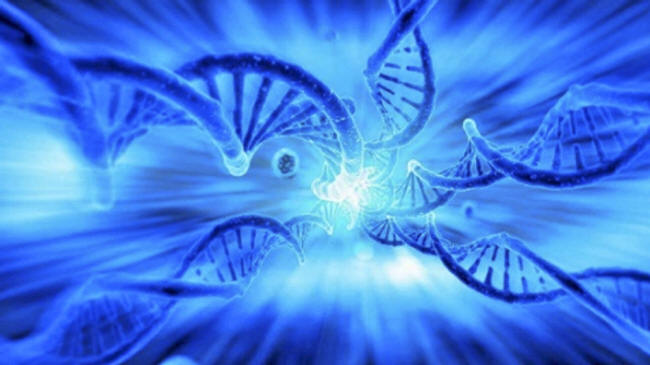|
by Jerry Gin
from
FMBR Website
However, research is now demonstrating that it is much more than that - it is also a transmitter of signals that carry information. With the fairly recent decoding of DNA in our genes via the Human Genomic Project, scientists thought that now we will have a "full" understanding of life as dictated by our genes.
Unfortunately, the number of genes that we possess is not that different than most living organisms - i.e., we are not so "special". Humans have about 23,000 genes, about the same number as found in mice and earth worms.
But we did have a lot of "junk" DNA that scientists did not understand since they were not the genes that coded for the proteins and enzymes that make up and build the body (hence, the term "junk").
We are now beginning to understand that the "junk" DNA appear to act as regulators that control the information that affects the operation of our body and hence its health.
This understanding is creating a new field called epigenetics.
It also appears that our intentions and thoughts become control knobs for changing the channel for the DNA signal! Light originating from our cells (biophotons) and electromagnetic signals appear to be involved in the signaling process.
I will now briefly
outline some of the scientific underpinnings that support this new
look at the role of the DNA molecule.
Standard science says this cannot occur. Since it does occur, the DNA has structured the photons in this space, i.e., established a pattern in the field.
This experiment gives us
insight on the mechanism of messaging using DNA...
Thus, information is
being carried with photons that have been "structured" in one
culture plate to another culture plate. Some Russian scientists
believe that this effect is being carried out by "torsion" energy.
Dr. Gariaev directed green laser light through salamander eggs and then through frog eggs.
He has coined the term "wave genetics."
The hypothesis is that the DNA structure is preserved and amplified through quantum coherence in the water tube and the PCR process mistakes it for the DNA itself.
The hypothesis: DNA interacts strongly with coherent laser light and affects the NH...O and NH...H hydrogen bonds.
Biophotons from all parts of the body are coherent (not random) and thus can allow communication. Machinery of each cell coordinates its activities by exchanging biophotons with other cells.
Organization occurs cooperatively using a pattern supplied by the DNA. The DNA acts like a photon store and will raise the energy levels of molecules, preparing them for a chemical reaction.
Consciousness may affect
the non-local field (like a torsion/bioenergy field) which affect
DNA which affect biophotons release which affect chemical reactions
such as protein synthesis.
One cannot just use electromagnetic fields (e.g., light) since they reduce in strength with distance. For example, if one considers a torsion field interacting with the field of consciousness, then distal effects can occur.
The consciousness
frequencies involved would interact with the DNA which transmits the
information for chemical reactions.
The experiments described
above, with references, can be found in Claude Swanson's
Life Force: The Scientific Basis
and Keith Scott-Mumby's
Virtual Medicine.
|


